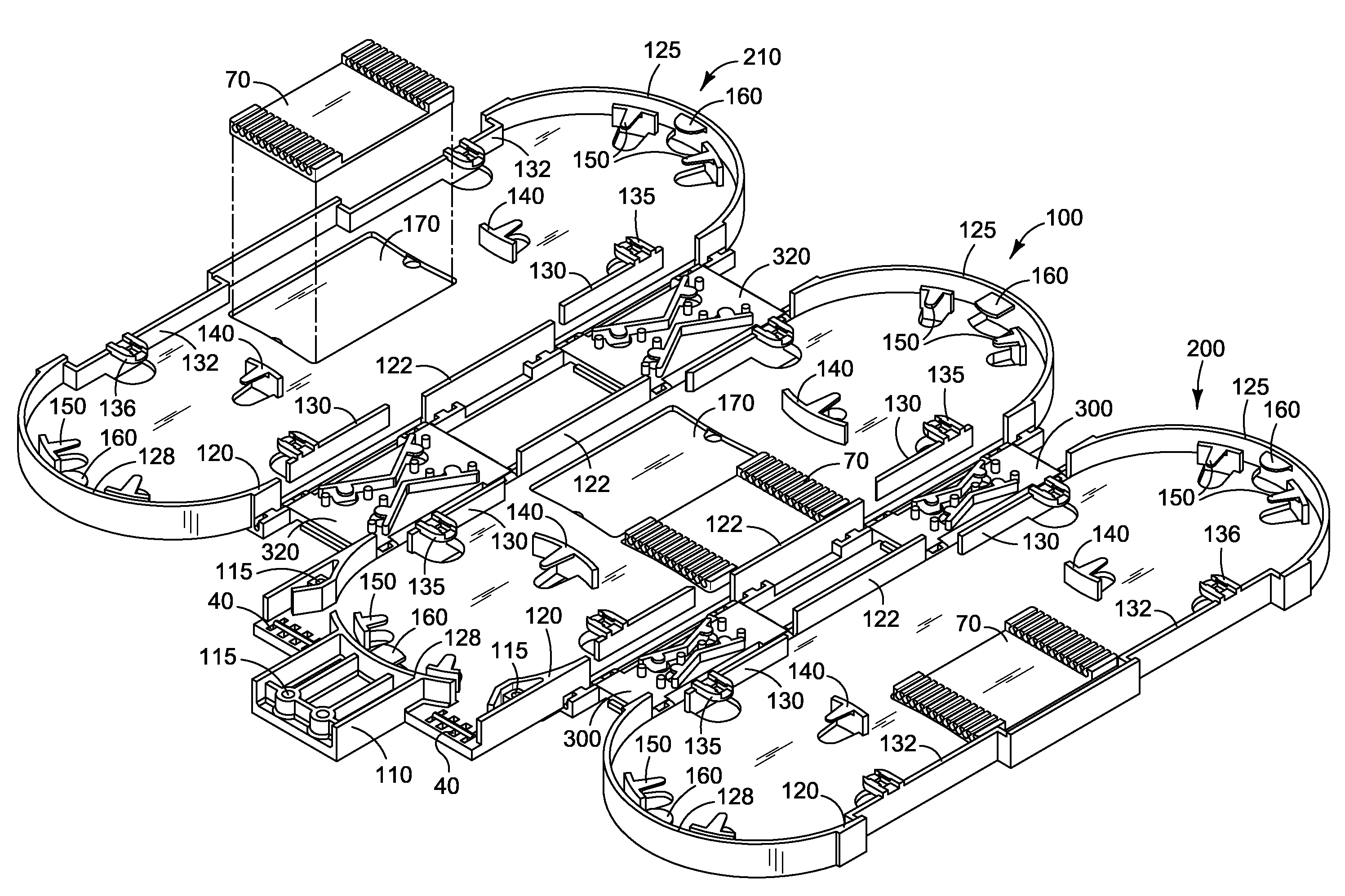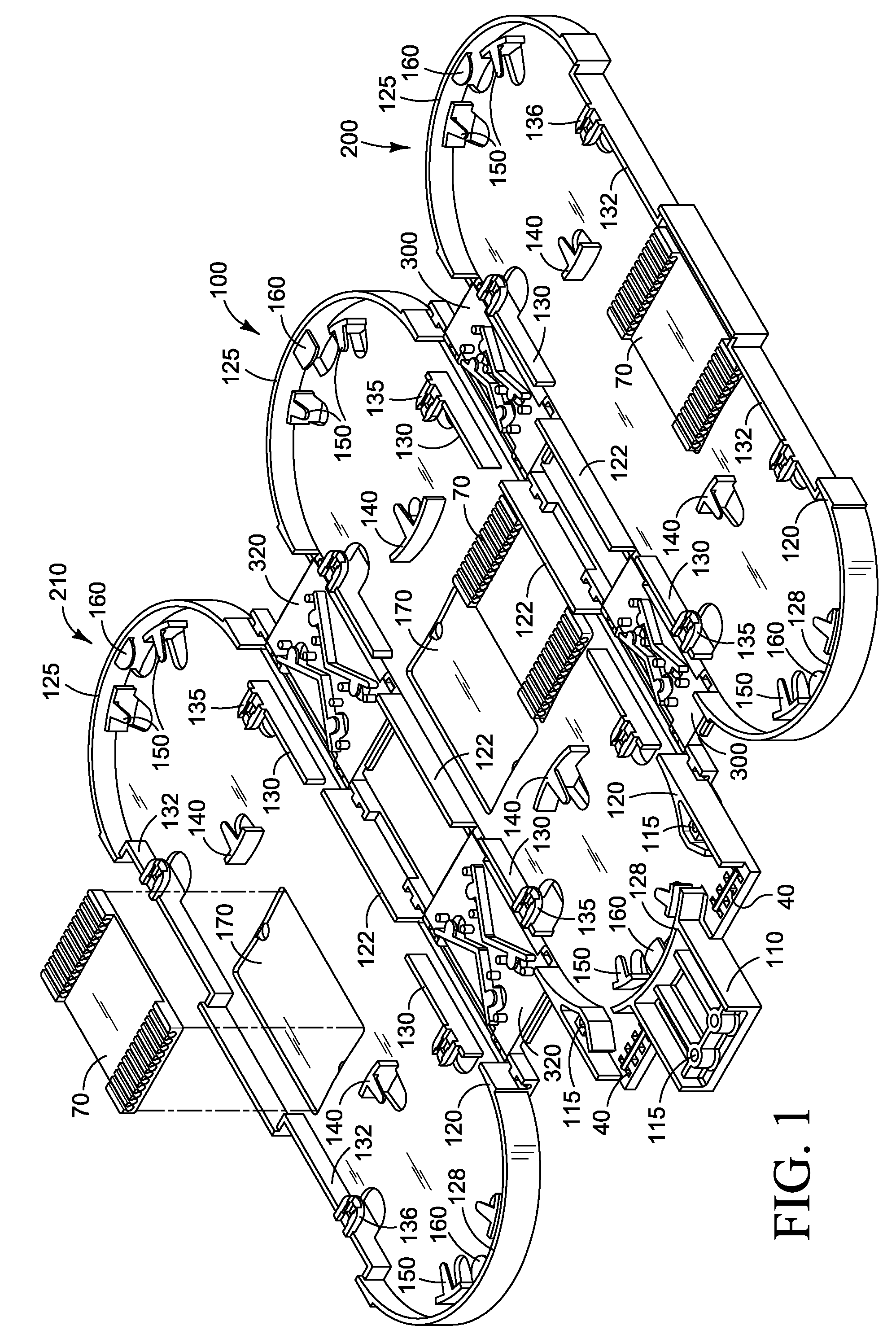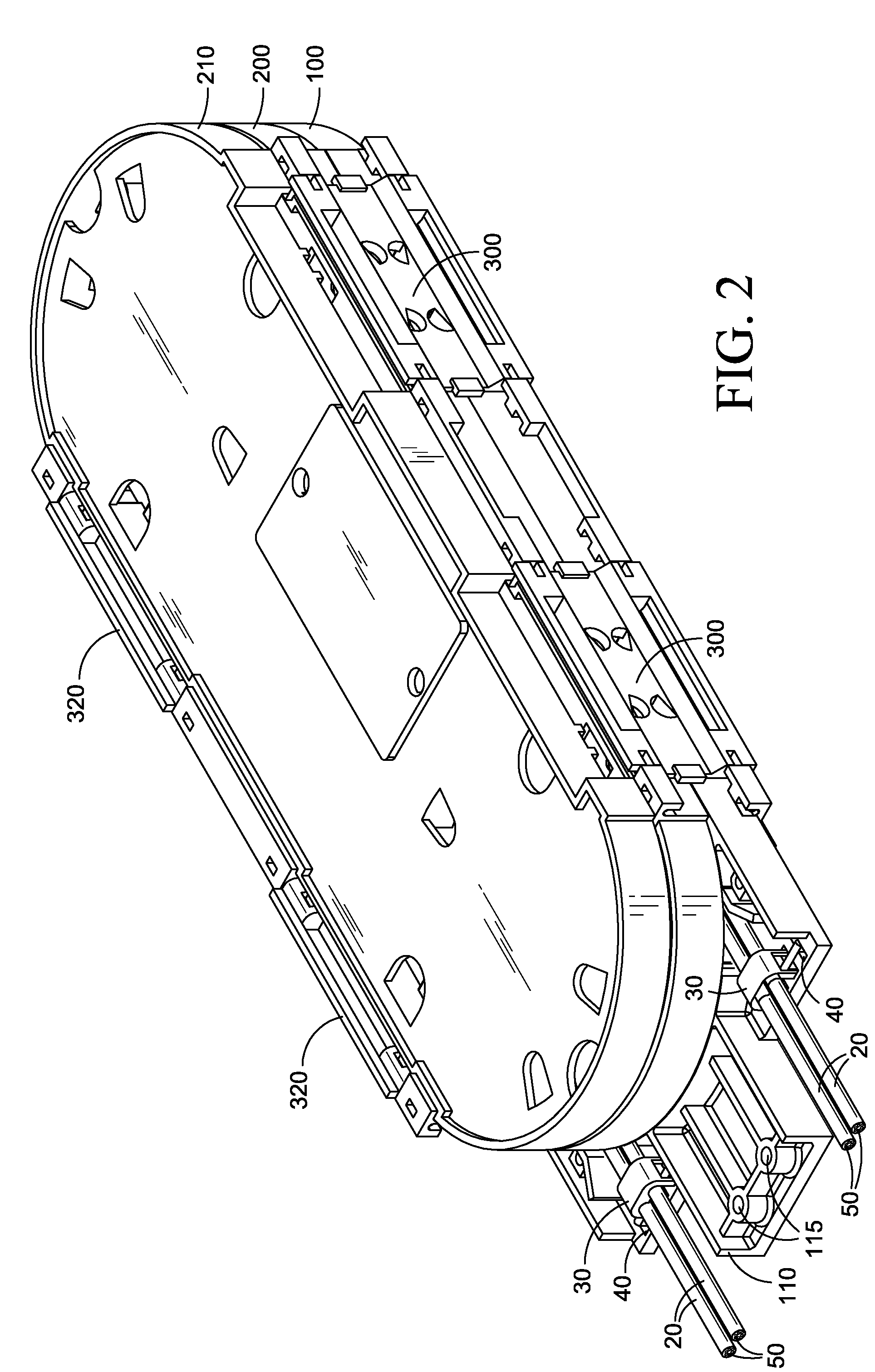Fiber optic categorization and management tray
a technology of fiber optics and management trays, applied in the direction of optics, instruments, optical light guides, etc., can solve the problems of limited space, challenge, and limited attempts in many aspects, and achieve the effects of improving the state-of-the-art in management, facilitating routing, and improving protection for network expansion
- Summary
- Abstract
- Description
- Claims
- Application Information
AI Technical Summary
Benefits of technology
Problems solved by technology
Method used
Image
Examples
Embodiment Construction
[0068]The categorization and management system of the present invention will now be described in detail beginning with reference to FIG. 1. Assembly of the system in its preferred embodiment begins with a base tray 100 that is hingedly connected on its right to a second, right-hand tray 200, and on the left to a third, left-hand tray 210. The connections between the base and right-hand trays are provided by hinges 300, while hinges 320 connect the left-hand tray 210 to the base tray 100. All connections between hinges and trays are provided by pins 302.
[0069]The right-hand tray 200 and the left-hand tray 210 are identical to one another, differing only in that they have been rotated within their planes by 180° from one another. With the exception of the mounting bracket 110 and strain relief elements 40, the outer trays 200 and 210 have the same features as the base tray 100. It is to be noted that, in one alternate embodiment, a smaller organizer can be constructed using only two t...
PUM
 Login to View More
Login to View More Abstract
Description
Claims
Application Information
 Login to View More
Login to View More - R&D
- Intellectual Property
- Life Sciences
- Materials
- Tech Scout
- Unparalleled Data Quality
- Higher Quality Content
- 60% Fewer Hallucinations
Browse by: Latest US Patents, China's latest patents, Technical Efficacy Thesaurus, Application Domain, Technology Topic, Popular Technical Reports.
© 2025 PatSnap. All rights reserved.Legal|Privacy policy|Modern Slavery Act Transparency Statement|Sitemap|About US| Contact US: help@patsnap.com



